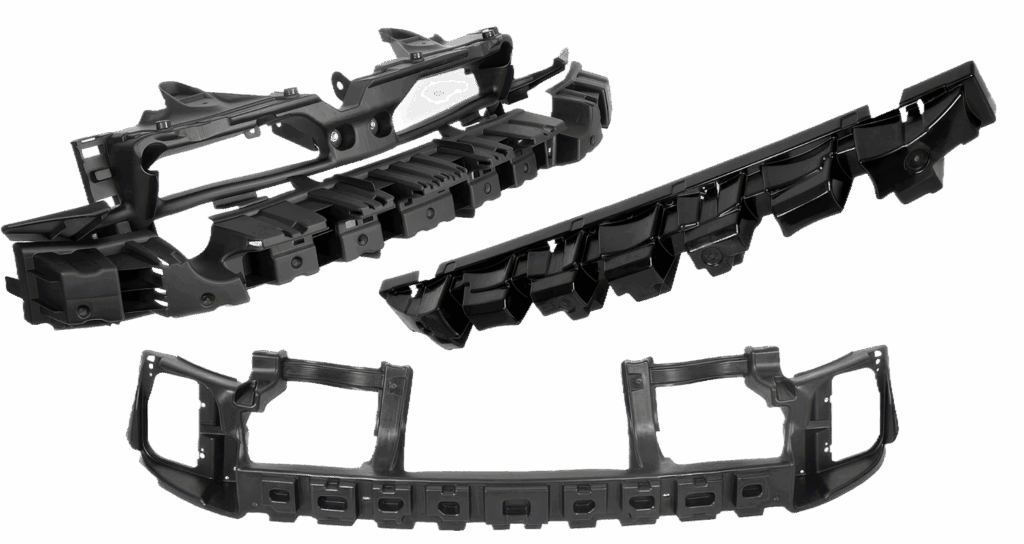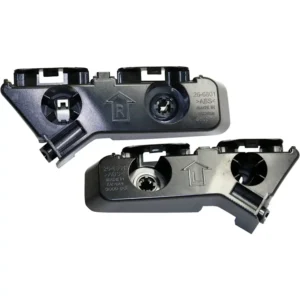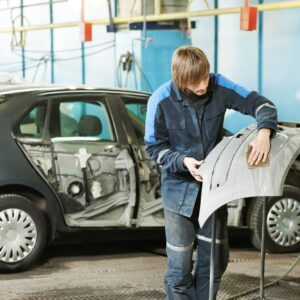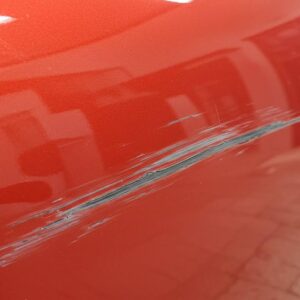The bumper absorber sits tucked between your plastic bumper cover and the metal support bar. It looks like nothing more than a piece of foam or plastic. But in a collision, that chunk of material decides how much your repair bill will cost.
But you may not even think about this until you read an article like this one.
Most drivers don’t even know their car has a bumper absorber. But if you’ve ever been in a low-speed fender bender and wondered why your bumper cover cracked while the rest of your vehicle survived, you’ve already witnessed the quiet work of this part. It takes the impact and spares the pricier parts behind it.
Here’s the real kicker: once it’s crushed, it’s done. A front bumper absorber isn’t designed to bounce back. Keeping it in place without replacing it is basically rolling the dice on the next hit. That’s why anyone dealing with collision repair eventually asks the same question: Do you need a bumper absorber, or can you skip it? Let’s break it down.
When Do You Need a Bumper Absorber?
A bumper energy absorber is part of your vehicle’s crash-management system. Its job is to absorb kinetic energy when you hit something, usually by crumpling in a controlled way. Without it, even a 5 mph tap could cause damage to the radiator, frame, or sensors. That means bigger repairs, higher costs, and possibly weaker crash protection the next time around.
So if you’ve been in an accident, even a small one, the real question is whether yours still works. And if it’s cracked, compressed, or missing chunks? Time to replace it.
What a Bumper Absorber Actually Does

Think of your bumper as a three-layer sandwich: the bumper cover (what you see), the car bumper absorber (foam or honeycomb structure), and the reinforcement bar (rigid metal or aluminum beam).
That middle layer is the soft cushion. It crushes under impact and absorbs impact forces so that the beam and frame don’t have to. If it weren’t there, the bumper would transfer the force straight to the structure of the car.
Auto safety engineers often call absorbers “sacrificial parts.” They’re meant to be used up in a crash. Once they deform, they don’t work the same way again.
Choosing the Right Bumper Absorber
Not all absorbers are created equal, and this is where people trip up.
Material
Some are dense foam, others are honeycomb plastic, and some newer designs use composite crush boxes. The material affects how it deforms and how much force it can handle. Get the same type designed for your vehicle.
OEM vs. Aftermarket
OEM (Original Equipment Manufacturer) absorbers usually cost more, but they’re built exactly like what’s in your vehicle. Aftermarket absorbers are a great alternative because they fit and perform the same, but come at a better price point.
You can upgrade to a bumper absorber that outperforms your OEM, especially if you prioritize enhanced impact resistance, weight reduction, or customization. Look for CAPA-certified aftermarket options or high-performance brands that use advanced materials.
If you’re aiming for more than just a factory match, look for these features:
- Good aftermarket absorbers use high-density foam, thermoplastic polymers, or energy-absorbing honeycomb structures that outperform standard OEM foam in crash tests.
- Lightweight designs can reduce overall vehicle weight and yet still enhance protection.
- Certain improved absorbers are designed to better distribute force across the bumper structure, minimizing damage to surrounding components.
- Off-road or performance vehicles may benefit from absorbers tailored for rugged impacts or high-speed collisions.
Fitment
Sounds obvious, but this part is shaped to match your bumper cover and reinforcement. If it doesn’t line up perfectly, you’ll have gaps or rubbing that throws everything off.
Durability
Over time, foam can crumble, and plastics can get brittle. If your car is older, even without a crash, it’s worth checking for wear.
Forums are full of stories from drivers who tried saving a few bucks with a cheaper absorber only to find their bumper cover sagged or rattled.
When Should You Replace a Bumper Absorber?
Even a parking-lot bump can deform the absorber. It might not show on the outside, but the foam could be compressed.
Those “oops” moments with shopping carts or poles add up. The absorber weakens every time it’s hit.
If the bumper cover or reinforcement bar is coming off, this is the time to replace the absorber, too. It’s easier than tearing it apart twice.
Cost to Replace a Bumper Absorber
Depending on your car, a bumper energy absorber might run $50 on the low end to $200 for higher-end models.
Shops usually charge 1 to 3 hours of labor since they have to pull off the bumper cover and possibly disconnect sensors. Labor rates vary, but expect $100 to $500 total depending on where you live and how bad the damage is. If your bumper cover, reinforcement bar, or parking sensors were also damaged, expect to shell out more.
In most cases, you’re looking at $150 to $700 for parts and labor. Compare that to frame damage or radiator replacement, and the absorber starts to look like a bargain.
DIY Installation Tips
If you’re tackling this job yourself, or just want to understand what the shop is doing, here’s what matters:
Follow the manual and take your time
Cars hide clips, screws, and wiring in tricky spots. Guessing usually means breaking something. Take your time with the bumper cover. Pry it off gently. Covers can crack, and clips are easy to snap.
Inspect everything while you’re in there
Check the reinforcement bar, brackets, and sensors. If one piece is bent, the absorber won’t sit right.
Check the fit and don’t overtighten
Line up the new absorber before tightening anything down. Compressing the absorber too much defeats its purpose; it needs space to crush.
Check electronics
If your bumper has parking sensors or cameras, reconnect and test them before reinstalling the cover.
Quick Q&A
Can you repair one instead of replacing it?
Not really. Once it’s crushed or cracked, it won’t behave the same way again. Gluing foam or plastic isn’t going to restore its energy absorption.
Does the rear bumper have one too?
Yes, most cars have absorbers in the front and back. Rear absorbers protect the trunk, fuel system, and in some cases, the rear crumple zone.
Does replacing an absorber affect how the car drives?
No. It only matters during impact. Your steering, suspension, and ride stay the same.
Any information provided on this Website is for informational purposes only and is not intended to replace consultation with a professional mechanic. The accuracy and timeliness of the information may change from the time of publication.

































